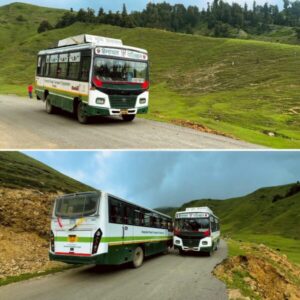White Gold Found in J&K: India’s Lithium Dreams Come True
- Where has the deposit been discovered
- What is the reason behind referring to Lithium Deposits as white gold?
- Has the potential discovery of Lithium deposits in J&K be a game-changer for India?
- What are the potential challenges that India may face because of this discovery?
- Where has the deposit been discovered
- The government on Thursday, February 9, 2023, said lithium reserves have been found for the first time in the country in Jammu and Kashmir.
- According to Mines Secretary Vivek Bharadwaj, the discovery of lithium reserves in Jammu and Kashmir represents the first time such reserves have been found in the country.
- Upon exploration by the Geological Survey of India (GSI), lithium reserves have been found in the Reasi district of Jammu and Kashmir.
- Earlier, the Mines Ministry had said that to strengthen the critical mineral supply chain for emerging technologies, the government was taking several proactive measures to secure minerals, including lithium, from Australia and Argentina.
- The recent Lithium reserves amounting to 5.9 million tonnes. This could potentially rank as the seventh-largest deposit globally of this rare element, comprising approximately 5.7% of the total global reserves.
- What is the reason behind referring to Lithium Deposits as white gold?
- Lithium possesses several key properties that make it an essential material for the manufacturing of electric vehicles and electronics. Its low density and high energy density enable it to be used in lightweight, high-performance batteries. Lithium’s high electrochemical potential and good conductivity make it an efficient conductor of electrical energy, while its stability and abundance make it a reliable and readily available resource for use in long-lasting batteries. As a result, lithium has become widely regarded as the most important element of the 21st century, playing a critical role in the development of sustainable energy solutions.
- Despite being the third element in the periodic table, lithium is widely considered the most important element of the 21st century due to its efficient and essential chemical properties required for manufacturing electric vehicles and electronic components.
- Lithium is a common element in the Earth’s crust, but it is scarce in the biosphere. It is primarily found in minerals such as spodumene, petalite, and lepidolite, which are typically located in granite pegmatites, as well as in some saltwater brines and geothermal waters. Despite its abundance, extracting lithium can be challenging and costly due to its low concentrations and remote locations.
- Recently, the demand for lithium has risen significantly due to its use in rechargeable batteries for electronic devices, electric vehicles, and energy storage systems. This has led to concerns about the sustainability of lithium mining and its impact on the environment.
- When it comes to powering electric vehicles, Lithium-ion batteries have several advantages over conventional acid car batteries. Firstly, Lithium-ion batteries are much lighter, making them ideal for use in electric vehicles where weight is a critical factor. Additionally, they have a high energy density, meaning they can store more energy in a smaller space, providing a greater range for electric vehicles. Lithium-ion batteries also have a longer lifespan, requiring less frequent replacements compared to conventional acid car batteries. They are also low maintenance, eliminating the need for regular checks and top-ups with water. Finally, Lithium-ion batteries can be charged much faster, reducing downtime for electric vehicles. As such, Lithium-ion batteries are becoming the preferred choice for electric vehicles and are an essential component in the development of sustainable transportation solutions.
- While Lithium is primarily used in batteries and electronics, it also has a few pharmaceutical applications. Lithium carbonate, a compound derived from Lithium ore, is used as a mood stabilizer in the treatment of bipolar disorder. It is believed that Lithium works by modifying the activity of certain chemicals in the brain, helping to stabilize the mood and reduce the severity of manic episodes. Lithium has also been used in the treatment of depression and certain types of headaches. While Lithium has proven effective in treating these conditions, it must be used with caution, as it can have significant side effects and toxicity concerns.
- Has the potential discovery of Lithium deposits in J&K be a game-changer for India?
- During the 62nd Central Geological Programming board meeting, Mr Bhardwaj stated that critical minerals, such as those found in mobile phones and solar panels, are necessary components in many aspects of modern life.
- He emphasized the importance of discovering critical minerals and processing them within the country as a crucial step towards achieving self-reliance.
- What are the potential challenges that India may face because of this discovery?
- Lithium is not a rare element in the Earth’s crust, but it is relatively scarce in the Earth’s biosphere. The concentration of lithium in the Earth’s crust is approximately 20 parts per million (ppm), making it the 25th most abundant element on Earth. However, lithium is typically found in low concentrations and often in hard-to-access locations, which can make it challenging and expensive to extract.
- While lithium is not rare, the demand for lithium has increased significantly in recent years due to its use in rechargeable batteries for electronic devices, electric vehicles, and energy storage systems. This has led to concerns about the sustainability of lithium mining and the impact of its extraction on the environment, where India would need to consider the overall environmental aspects as well.
- However, India must not stop at the discovery and exploration stage, but rather focus on utilizing these resources in the most efficient way possible.
- In doing so, India should prioritize setting up ample infrastructure and manufacturing units to produce and export lithium batteries and electronic components to the world. This will ensure that India doesn’t solely export raw lithium ore to the world but instead adds value to the supply chain by providing the finished products.
- By establishing a robust and self-sustaining lithium ecosystem, India can not only meet its domestic demand for lithium-based products but also cater to the global market. This would not only boost India’s economy but also cement its position as a significant player in the global lithium industry.

Kumud Sharma is the First Well-Known Female Journalist of the Journalism World of Himachal Pradesh. I am the Founder, Editor in Chief, Managing Director, Promoter of DiaryTimes. As a Female Journalist, With My Experience of More Than Nine Years, I Tell You Every News of Himachal Pradesh From The Ground Level With Absolutely Accurate and Correct Information, Be it the Politics of Himachal Pradesh or the Ground Reality, My Perspective On Every News Will Give You Assurance. I Assure You That Every News of Mine Will Comply With the Expertise and Fact Checking Policy.





